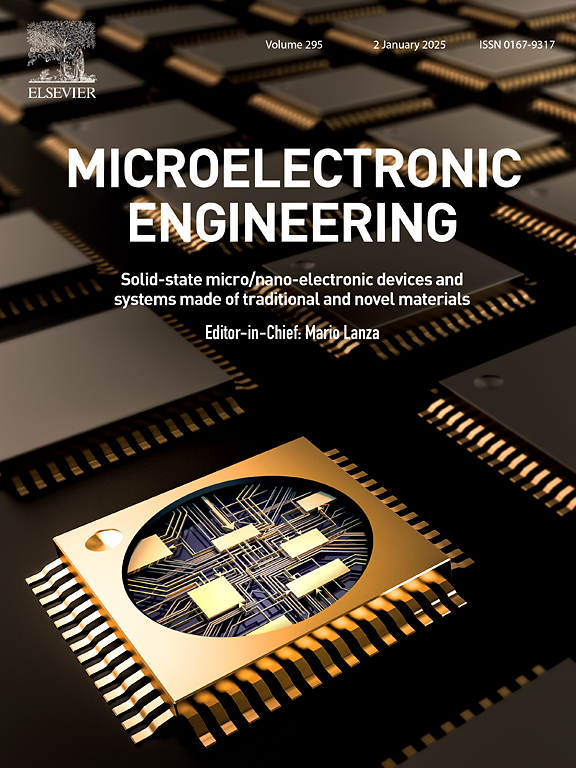多重阿兹特克步骤作为一个角度分辨微光谱仪的灰度冰光刻
IF 3.1
4区 工程技术
Q2 ENGINEERING, ELECTRICAL & ELECTRONIC
引用次数: 0
摘要
几十年来,阿兹特克台阶由于其作为角度分辨微分光镜的潜在应用而得到了广泛的应用。然而,以小于1nm的精度复制多个步骤的挑战阻碍了Aztec步骤的商业化。虽然在PMMA(聚甲基丙烯酸甲酯)上进行了灰度电子束光刻(G-EBL)的尝试,但表面粗糙度和平整度仍然是一个大问题。本文采用蒙特卡罗算法对非晶固体水(ASW)中灰度电子束光刻(俗称冰光刻)的阿兹特克步长进行了数值模拟。为了比较,模拟中加入了PMMA的灰度电子束光刻。此外,还利用有限差分和时域(FDTD)方法分别对ASW和PMMA中数值模拟的Aztec阶跃进行了角分辨光谱的理论表征。我们的研究结果表明,与PMMA相比,ASW上的灰度冰光刻能够复制阿兹特克台阶,表面更光滑,平整度更好,光谱分辨率显着提高。本文章由计算机程序翻译,如有差异,请以英文原文为准。

Multiple Aztec steps as an angle resolved micro-spectrometer by grayscale ice lithography
For decades, Aztec steps have been widely attained because of the potential application as an angle-resolved micro-spectroscope. However, the challenge in replicating multiple steps with less than 1 nm precision hinders the Aztec steps to be commercialized. Although grayscale electron beam lithography (G-EBL) on PMMA (polymethyl methacrylate) has been tried but the surface roughness as well as the flatness still remains a big issue. This work evaluates the grayscale e-beam lithography in amorphous solid water (ASW), nicknamed as ice lithography, for Aztec steps by numerical simulation based on Monte Carlo algorithm. For comparison, grayscale electron beam lithography in PMMA was included in the simulation. Furthermore, simulation using finite difference and time domain (FDTD) method was also carried out to theoretically characterize the angle-resolved spectra by the numerically modeled Aztec steps in ASW and PMMA, respectively. Our results show that grayscale ice lithography on ASW is able to replicate Aztec steps with much smother surface and better flatness than that on PMMA, giving rise to significantly improved spectral resolution.
求助全文
通过发布文献求助,成功后即可免费获取论文全文。
去求助
来源期刊

Microelectronic Engineering
工程技术-工程:电子与电气
CiteScore
5.30
自引率
4.30%
发文量
131
审稿时长
29 days
期刊介绍:
Microelectronic Engineering is the premier nanoprocessing, and nanotechnology journal focusing on fabrication of electronic, photonic, bioelectronic, electromechanic and fluidic devices and systems, and their applications in the broad areas of electronics, photonics, energy, life sciences, and environment. It covers also the expanding interdisciplinary field of "more than Moore" and "beyond Moore" integrated nanoelectronics / photonics and micro-/nano-/bio-systems. Through its unique mixture of peer-reviewed articles, reviews, accelerated publications, short and Technical notes, and the latest research news on key developments, Microelectronic Engineering provides comprehensive coverage of this exciting, interdisciplinary and dynamic new field for researchers in academia and professionals in industry.
 求助内容:
求助内容: 应助结果提醒方式:
应助结果提醒方式:


